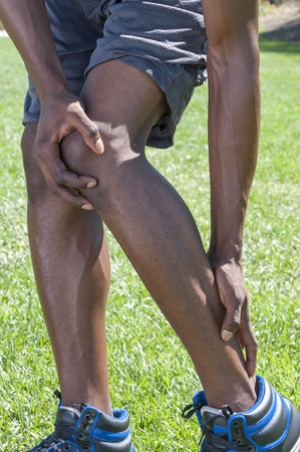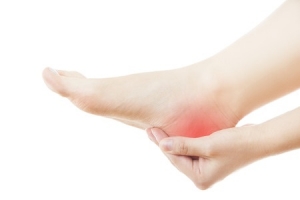Connect With Us
Blogs
Displaying items by tag: Achilles Tendon
Dealing with Calf Pain
One of the trickier areas to diagnose that we see at Superior Foot & Ankle Care Center is pain in the calf. This symptom can point to a variety of disorders, some more serious than others. The only way to definitively find out what’s causing the pain is to make an appointment at our Long Beach office. Our podiatrists, Dr. Victoria Foley and Dr. Constance Omelas will do a complete lower extremity examination and also get your medical history to help track down the source of calf pain. Some possibilities include:
Exercise or Injury—the most obvious and least threatening cause of calf pain is muscle pain due to exercise. If you have recently started a new fitness routine or sport, some soreness may be normal. Pain that lasts more than a few days, however, or that is severe requires medical attention. Injuries to calf muscles or to the Achilles tendon are possible in cases where patients do too much too soon or suddenly ramp up their exercise program.
Dehydration—did you know that most of us are walking around in a state of chronic dehydration? Unless you drink half your body weight in water each day, you may be among the dehydrated. With extra sweating in the summer months the risk increases. One of the signs of dehydration is cramping in the calf. Sometimes cramps will occur at night and wake you up.
Other Foot Disorders—sometimes a pain in the calf is not about the calf at all. It can be a symptom of a foot or ankle problem such as flat feet or Equinus.
Deep Vein Thrombosis (DVT)—this is a blood clot that forms deep in the calf. It is more common if you have had surgery recently or been on an airplane. This is a potentially dangerous condition and if you believe there is any possibility of DVT you should contact the foot doctor immediately.
Peripheral Vascular Disease—poor circulation to the legs and feet, which are characteristic of this disease (and other conditions, such as diabetes, that affect the circulatory system), can result in calf pain, especially when you sit with your legs up or when walking.
If you have been experiencing consistent calf pain, contact us by calling: 562-420-9800.
Keeping “Pump Bump” Under Control
Pump Bump is the common name for Haglund’s Deformity. Many patients that we at Superior Foot & Ankle Care Center see with this condition mistakenly believe that it is caused by their shoes. In reality, the bony protrusion at the back of the heel is the result of faulty foot structure which is often inherited. Other conditions that can lead to pump bump include:
- Underpronation (walking on the outside edge of your foot)
- High arches
- Tight Achilles tendon
Reducing Pain and Irritation
Our podiatrists, Dr. Victoria Foley and Dr. Constance Omelas, will need to examine your foot to confirm a diagnosis of Pump Bump. The foot doctor will likely order x-rays of the back of the heel as well to evaluate the bone structure and rule out other conditions that might cause pain and irritation in that part of the foot.
Shoes with stiff backs that repeatedly rub against the bump make it red and painful. Pumps consistently hit the spot where the deformity is located and hence the name, Pump Bump. Other shoes are problematic also, including high topped work boots, ice skates and certain men’s dress shoes. If you have Haglund’s Deformity you obviously have to be selective about your footwear. A callus or open sore can form if you continue to wear shoes that put pressure on this spot.
There are several other ways to relieve the pain and decrease the friction on the bony enlargement, depending on what else is putting stress on the back of the heel. The foot doctor may recommend heel lifts to help compensate for high arches, stretching exercises if you have a tight Achilles tendon, or custom orthotics to help control the motion of the foot. Padding, immobilization and medication are other avenues of treatment. If you continue to be in severe pain despite these noninvasive measures, surgery may be required.
The bottom line is if you have Pump Bump you don’t need to continue to suffer. Make an appointment at our Long Beach office by calling 562-420-9800 and find out what can be done to relieve your painful symptoms.


